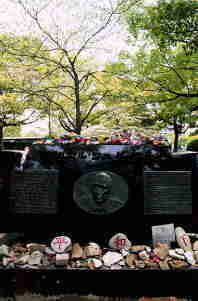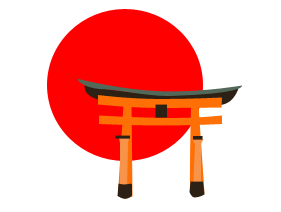The special characteristic of an atomic bomb is nuclear radiation, something which conventional weapons never produce. The radiation inflicts severe injuries on the human body. The radiation from the atomic bomb dropped on Hiroshima affected those within two to three kilometers of the hypocenter, and especially those within 900 meters, who received life-threatening doses. Many of them died within a few days.
The tremendous fire that burned downtown caused intense firestorms and whirlwinds. Within 20 to 30 minutes, a heavy black rain began falling in areas to the northwest. This rain contained large amounts of radioactive soot and dust, thus contaminating areas far from the hypocenter. It is said that fish died in ponds and rivers, and people who drank well water suffered from diarrhea for about 3 months. After the explosion, high levels of residual radiation remained on the ground for an extended period. Many who did not directly experience the bomb were affected.
The Danger of Radiation
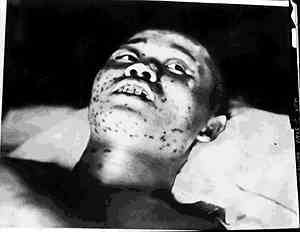
The radiation caused alterations in the blood, destroyed the bone marrow’s ability to produce blood and also seriously damaged the liver and other internal organs. Numerous people sustained fatal injuries as a result.
Within about 2 kilometers of the hypocenter, high-levels of residual radioactivity remained on the ground for about 2 weeks after the actual explosion. Therefore, some who came to the area soon afterwards developed symptoms of radiation sickness and died.
Lost Hair
Hiroko (then 18) and her six-year old brother were on the first floor of their home, only 800 meters from ground zero, when the bomb’s blast wrecked the house. They managed to get outside the house. She had thirty-seven injuries, but her little brother was hardly hurt at all. Her brother remained healthy and active until August 21, when suddenly his temperature rose rapidly.
Most of his hair came out and sometime later, convulsed with vomiting, her little brother died. Not long afterward, the mother was combing Hiroko’s hair, and it too came out easily. At the time people often said that the loss of hair meant death was near. Hiroko resigned herself to the same fate as her brother. But Hiroko made a remarkable recovery. Gradually her hair grew back. Though she still suffered some atomic aftereffects, she was married in 1947.
She had to have several surgical operations. But she tries always to live courageously, saying, “I must do my best to make up for my brother’s short life.”
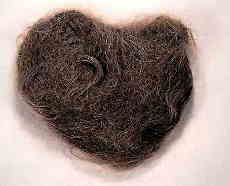
Black Rain
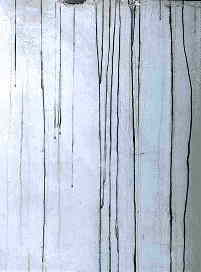
From around 9 a.m. black rain covered a wide area from the hypocenter to the north-west. It rained heavily for one hour or more in some areas. Since the rain contained a lot of black soot which was produced by the terrific sea of fire, it was called “black rain”, oily and sticky. Furthermore, it contained radioactive elements produced by the fission of uranium. Exposed to the rain, many people developed symptoms of the atomic bomb diseases and died.
Suffering from the aftereffect
Radiation caused serious effects on human bodies not only just after the bombing, but for a long period of time since then. The long-term suffering is known as a characteristic of the aftereffect of an atomic bomb. It is not thoroughly clear, over 50 after the bombing , what long-term effects radiation taken into human bodies brings about as the time passes on. Leukemia, cancer or various diseases have developed two or three years or even ten years after the explosion. Their health has been damaged even now.
Keloids of a Girl’s Arm
The heat rays of the atomic bomb struck the human body and produced burns. At the same time, radioactivity injured the inner tissues of the skin and formed keloids on the surface of the skin. After seeming to heal, the scars left by the burns swelled up. This type of swelling is called a keloid. Most keloids developed in 1946 and 1947, and most commonly in teenagers. At present, most keloids have flattened out but are still recognizable as scars.
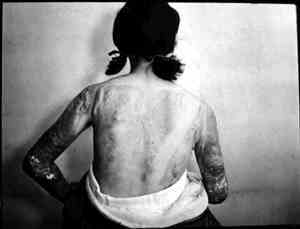
In-utero Exposure (microcephaly)
The A-bomb had serious effects on fetuses. Many were stillborn, and exposed fetuses born alive had higher infant mortality rates than other children.
In-utero survivors also suffered an increased incidence of microcephaly, a syndrome characterized by an abnormally small skull, accompanied in severe cases by mental retardation.
Patient with microcephaly and patient’s mother (now deceased) (1986) / Courtesy of Takaharu Narita
Relief and Rescue Activities
The disaster caused by the atomic bomb struck the whole city in an instant. All public offices including the prefectural office, the city office, police stations, and others were inactivated. In the day following the bombing, a defense headquarters was established, with elements of the Akatsuki Corps, which were attached to the Army Shipping Unit in Hiroshima and which had suffered relatively light damage, taking the lead, Relief operations were carried out by military personnel, government officials and citizens working together as one.
Dr. Marcel Junod
A Swiss doctor, the late Dr. Marcel Junod came to Hiroshima on September 8, 1945 when the A-bomb tragedy still filled the city. Dr. Junod, as Chief Representative to Japan of the international Red Cross Committee came with the Allied Forces investigating team bringing 15 tons of medicine which were provided by the General Headquarters of the Occupation forces. He remained in Hiroshima even after the team withdrew and made his best efforts to help the A-bomb survivors. While occupied in surveying the actual extent of the appalling catastrophe, he himself treated many citizens who had fallen victim to the A-bomb. The medicines brought to the city through his endeavors were distributed to each aid station, saving thousands of A-bomb survivors.
To honor his work and love for humanity, the monument was erected at the southern entrance of the Peace Memorial Park. On the back of the monument, the words of Dr. Junod are carved as follows: “Innumerable cries are asking for you help
